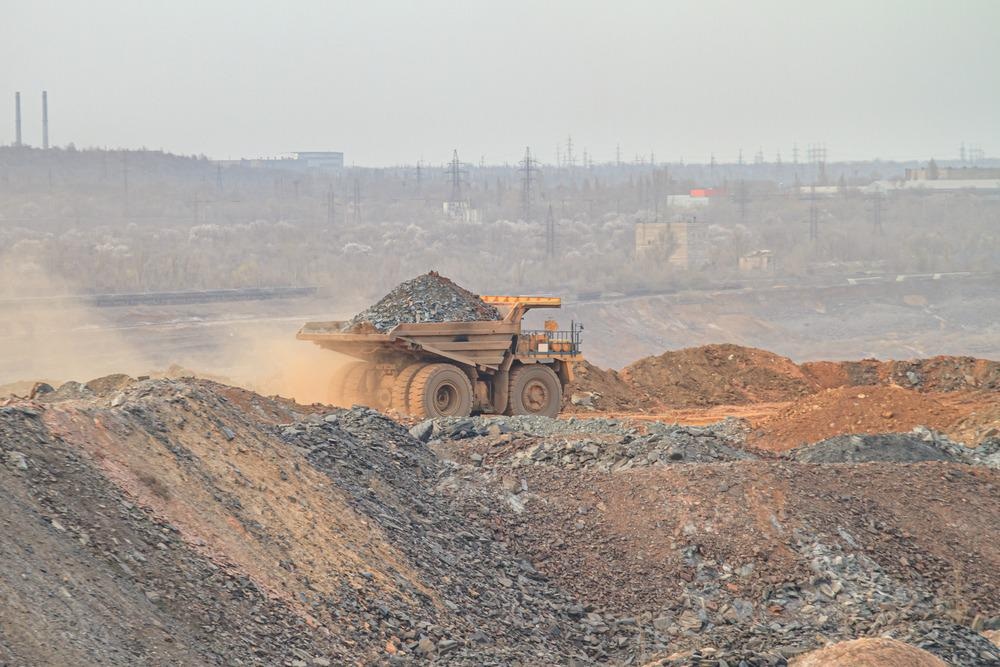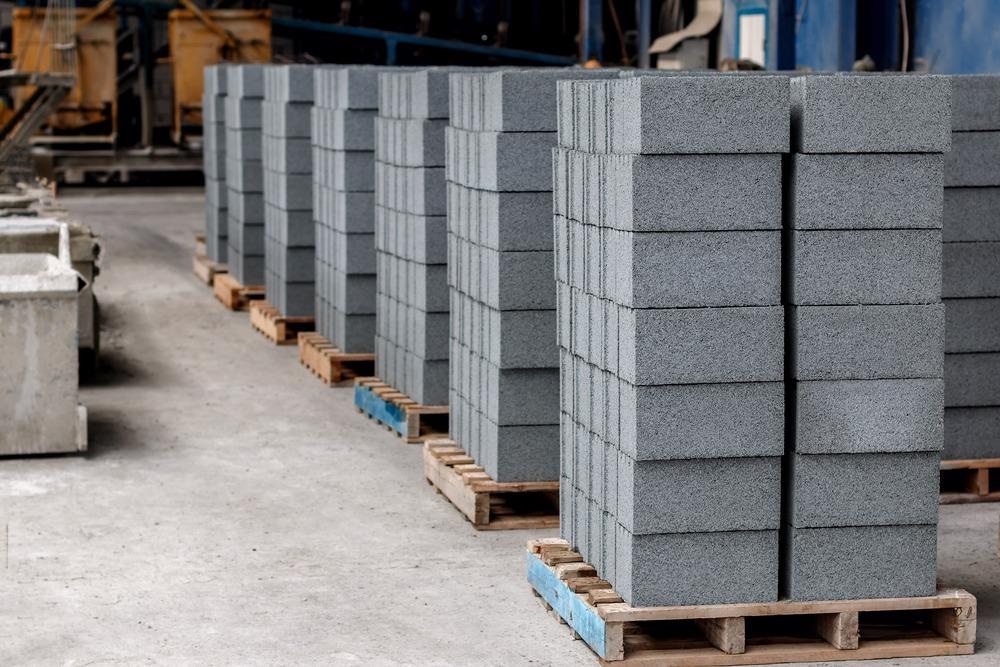Concrete production involves the use of small aggregates that must be ground via an energy-intensive process, making the concrete industry one of the worst carbon emitters. By creating concrete from mining waste, industries can tackle both CO2 emissions and waste disposal.

Image Credit: Maksim Maksimovich/Shutterstock.com
Furthermore, the mining industry is based in the unsustainable extraction of natural resources. Mining operations pollute the environment, destroy natural habitats and generate massive amounts of potentially hazardous waste.
The Negative Impacts of Mining and Concrete Production
There are two main types of mining operations: underground and open pit. Whereas underground mining involves tunneling underground, open pit mining requires the stripping away of earth and rock to expose mineral resources.
This latter type of mining is particularly fraught as it leads to significant land degradation, air pollution and creation of rock wastes.
Waste from an open pit mine most typically placed in a dump and can occupy a significant amount of land. In addition to degrading the land, these waste dumps must be maintained to avoid the leakage of materials.
Waste, pollution and sustainability are also a major issue for the concrete industry. Carbon dioxide production is a particularly troubling issue, but research has shown that replacing traditional ingredients of concrete with waste materials could lead to significant environmental benefits.
Currently, there are several efforts around the world focused on developing more sustainable forms of concrete that could be made with waste materials, and waste from mining operations is a particularly attractive option.
Research has shown mining waste is economically viable and its availability would help to meet the concrete production industry’s growing appetite for raw materials.
Making Ultra-High-Performance Fiber-Reinforced Concrete from Mining Waste
Made through the inclusion of small steel fibers, Ultra-High-Performance Fiber-Reinforced Concrete (UHPFRC) provides a high compressive strength and resistance to flexural stresses.
A new study from a team of European based researchers has revealed UHPFRC could be produced using sand waste from fluoride mining operations. The study team said they were able to reach two main conclusions.
First, they found the inclusion of sand wastes lead to a more continuous distribution of particle size, which reduced water requirements.
Second, the quality of sand waste was lower than that of the natural sand it's meant to replace, but this translated to superior mechanical performance in replacement ratios up to 70 percent.
The study team also found the inclusion of sand waste boosted the consistency of fresh concrete, which made mixing easier. Furthermore, the superior consistency led to greater compactness and superior compressive strength.

Image Credit: IvanovRUS/Shutterstock.com
The research team noted that there was significant variability in their results. They theorized that this variability could be due to the varied distribution of reinforcing steel fibers.
A Study on General Feasibility
While UHPFRC study focused on a specific type of concrete, another recent study took a more general look at the viability of mining wastes in industrial concrete production.
New research from the Technical University of Denmark (DTU) has shown that up to 10 percent of the cement component in concrete can be effectively substituted with waste remnants of crushed mining ore, which is also known as mine tailings.
To reach their conclusion, the researchers conducted mechanical tests of mine tailings gathered from different operations all around the world.
The study team found that substituting main tailings up to 10 percent in conventional concrete would not compromise the strength of the finished product.
sing calculations, the researchers also found using mine tailings would have a net positive impact on carbon emissions, even if wastes had to be shipped long distances for processing.
However, the researchers said further study would have to be done before mine tailings could be considered safe for use in concrete. Specifically, the chemical qualities of finished products need to be studied to ensure the substitution is safe over the course of the finished product's full lifecycle.
Sometimes, concrete structures fall into disrepair and are subsequently demolished. this waste concrete is then often reused in the creation of new structures and roadways.
Looking Ahead
The DTU research team said they are currently performing chemical analysis to determine if mine tailings can be used in an unprocessed form, or if they need to be treated.
Mine tailings often include heavy metals and other potentially hazardous substances. If concrete made from mine tailings were to come in contact with water, it could potentially cause hazardous substances to leach out.
If mine tailings do need to be treated prior to use, the researchers said there are a number of potential options, including the use of an electrochemical bath or electrochemical cleaning methods.
The DTU scientists said they are analyzing various treatment methods to determine the most effective and most economical approach to processing mining wastes.
Resources and Further Reading
Gonzalez, J. et al. (2021). Use of Mining Waste to Produce Ultra-High-Performance Fibre-Reinforced Concrete. Materials. [Online] Available at: https://im-mining.com/2021/09/24/keliber-lithium-mine-waste-streams-utilised-aggregate-high-tech-concrete-production-facility/
Evdokimov, S. et al. (2016). Construction Materials Based on Wastes from Mining and Metallurgical Industries. Procedia Engineering. [Online] Available at: https://www.sciencedirect.com/science/article/pii/S1877705816314291
Brixen P. (2018). Crushed mining waste can replace cement. Technical University of Denmark. [Online] Available at: https://www.dtu.dk/english/news/2018/11/crushed-mining-waste-can-replace-cement?id=d0c56df3-e5ef-4264-a9ca-315fc141724d
Gayana, B et al. (2018). Sustainable use of mine waste and tailings with suitable admixture as aggregates in concrete pavements - A review. Advances in Concrete Construction. [Online] Available at: http://www.techno-press.org/fulltext/j_acc/acc6_3/acc0603001.pdf
Disclaimer: The views expressed here are those of the author expressed in their private capacity and do not necessarily represent the views of AZoM.com Limited T/A AZoNetwork the owner and operator of this website. This disclaimer forms part of the Terms and conditions of use of this website.